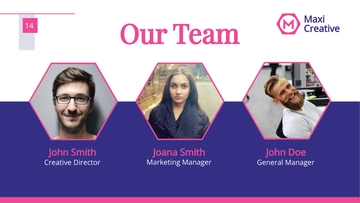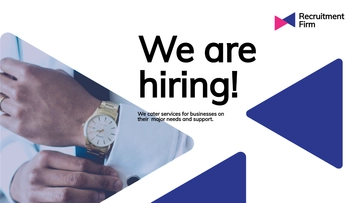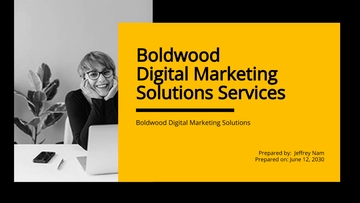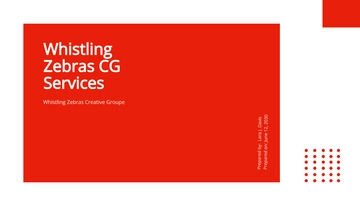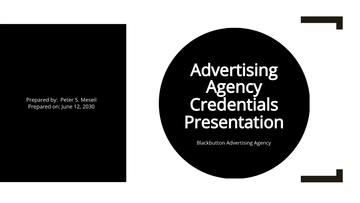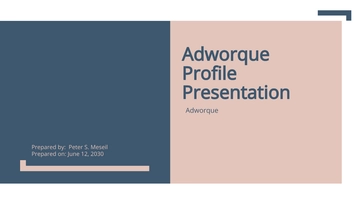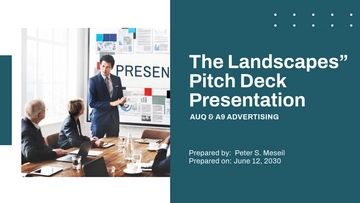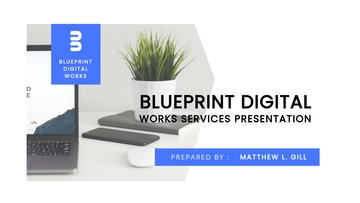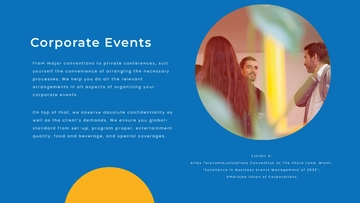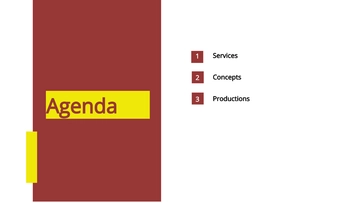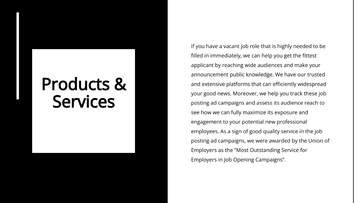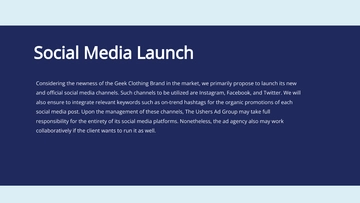Free Sales Presentation SOP

I. Executive Summary
In the dynamic business landscape of the modern era, effective sales presentations stand as pivotal tools for achieving organizational success. The Sales Presentation SOP serves as a comprehensive guide to streamline the process, ensuring that every presentation is a masterpiece of persuasion and engagement.
These presentations are not just about delivering information; they are about forging connections, building trust, and ultimately driving sales. This SOP is your compass in the complex world of modern sales, offering a structured approach to ensure that each presentation is a strategic opportunity to win clients, close deals, and boost brand recognition.
This guide takes into account the rapidly evolving technologies, communication channels, and audience expectations. It equips businesses to adapt and excel in an era where the competition is fierce, and customer demands are continually evolving. By following this SOP, you will not only be delivering presentations; you will be creating memorable experiences that resonate with your audience.
II. Introduction
In an era where information flows at unprecedented speeds, the art of an effective sales presentation remains both timeless and transformative. A successful presentation is not just a recitation of facts; it's a dynamic and persuasive engagement that influences decisions and fosters relationships.
This SOP is designed to provide a standardized framework that ensures each sales presentation conducted by [Your Company Name] is meticulously planned, expertly executed, and optimally aligned with the diverse needs of our clients. It is tailored for the ever-changing landscape, allowing us to adapt to different industries and audiences.
Effective sales presentations are essential to drive revenue, foster client relationships, and strengthen our market presence. This SOP will help our team consistently meet these goals, providing a structured approach to maximize the impact of our presentations across various business sectors and scenarios.
III. Purpose And Scope
The purpose of this Sales Presentation Standard Operating Procedure (SOP) is to establish a structured and consistent approach to delivering effective sales presentations. In an ever-evolving business landscape, where competition is fierce and audience expectations are continually changing, the need for a standardized method for creating and delivering presentations has never been more critical.
This SOP is designed to serve a broad spectrum of businesses and industries, ensuring that the principles outlined here are adaptable to meet the unique needs and goals of various enterprises. Whether you are a seasoned sales professional or a novice in the field, this SOP will provide valuable insights and actionable steps to elevate your presentation skills.
The scope of this SOP encompasses the entire process of a sales presentation, from the initial preparation to the post-presentation actions. It offers a comprehensive framework for individuals and teams involved in sales, business development, marketing, or any role that requires delivering persuasive, engaging presentations.
By adhering to this standardized procedure, businesses such as [Your Company Name] can expect to achieve the following objectives:
A. Enhanced Consistency
Ensuring that every sales presentation adheres to a uniform structure and quality standard, regardless of the presenter.
B. Increased Efficiency
Streamlining the preparation process and reducing the time required to create compelling presentations.
C. Improved Engagement
Equipping presenters with the tools and strategies to keep their audiences engaged and attentive throughout the presentation.
D. Heightened Effectiveness
Raising the likelihood of achieving the desired outcomes of each presentation, whether it's closing a deal, securing an investment, or conveying a critical message.
E. Adaptability
Allowing businesses to tailor the SOP to suit their specific industry, target audience, and goals while maintaining a core framework for success.
IV. Preparing For A Sales Presentation
Preparing for a successful sales presentation is the foundation of a compelling pitch. This section breaks down the key steps involved in this phase:
A. Defining Objectives
Before you embark on creating your sales presentation, clearly outline your objectives. What do you want to achieve with this presentation? Whether it's closing a deal, securing investment, or imparting vital information, having a precise goal is essential. Objectives provide direction and ensure that your presentation remains focused.
B. Audience Analysis
One size does not fit all in presentations. Understanding your audience is paramount. Analyze their demographics, interests, and pain points. What are their expectations and preferences? Tailor your presentation to address their specific needs and concerns. This personalized approach establishes a connection and increases the likelihood of success.
C. Research and Content Creation
Effective presentations are rooted in robust research and data-driven content. Gather information, statistics, and relevant data to support your key points. Your content should not only be informative but also persuasive. Craft a compelling narrative that tells a story, one that resonates with your audience and drives your message home.
D. Visual Aids
Visual aids play a crucial role in enhancing audience engagement and comprehension. Create impactful slides or visuals that support your narrative. Ensure that they are clear, concise, and visually appealing. Visual aids should compliment your speech, not overwhelm it. Use them to illustrate key points, data, and concepts effectively.
E. Content Structure
Organize your content logically to ensure a smooth flow throughout the presentation. Begin with a captivating introduction that grabs the audience's attention, followed by a clear presentation of key points and a compelling conclusion. A structured presentation not only makes it easier for the audience to follow but also conveys professionalism and organization.
F. Engagement Strategies
To keep your audience engaged, employ a variety of engagement strategies. These can include storytelling, real-world examples, anecdotes, or interactive elements. Engaging presentations hold the audience's attention and create a memorable experience.
G. Relevance
Ensure that your presentation remains highly relevant to your audience. Every piece of content, every slide, and every word should contribute to the overarching message. Avoid tangents and unnecessary information. The more relevant your presentation is, the more impact it will have on your audience.
V. Crafting The Presentation
Creating a compelling sales presentation is an art that combines storytelling, structure, engagement strategies, and relevance. This section provides an in-depth exploration of each element.
PRESENTATION ELEMENT | DESCRIPTION |
Storytelling | Begin with a compelling hook or story that resonates with the audience's challenges or aspirations. |
Weave your product or service into the narrative, demonstrating how it offers a solution to their issues. | |
Emotionally engaging stories create a lasting impact. | |
Structure | Start with a concise introduction to set the stage. |
Organize the body logically with distinct sections or key points. | |
Conclude with a memorable closing statement to reinforce key takeaways. | |
Engagement Strategies | Use interactive elements like questions, polls, and audience participation. |
Incorporate visuals, infographics, and multimedia for variety. | |
Share relatable anecdotes or case studies to illustrate real-world success. | |
Relevance | Tailor the presentation to address the specific needs and pain points of the audience. |
Demonstrate an understanding of their challenges and how your solution directly addresses them. | |
Personalize the content by referencing their industry, company, or individual roles. |
VI. Rehearsal And Review
Effective rehearsal and review processes are the backbone of a successful sales presentation. This section provides detailed steps for honing your presentation skills.
A. Practice
Rehearse your presentation multiple times. Practice helps you internalize the content, smooth out delivery, and manage time effectively. Consider rehearsing in front of a mirror, recording yourself, or presenting to a trusted colleague for feedback. Rehearsals should aim for fluency without sounding scripted.
B. Peer Review
Seek feedback from colleagues or mentors who can provide valuable insights. Constructive criticism from peers can reveal blind spots and highlight areas for improvement. Encourage them to evaluate your content, speaking style, body language, and engagement techniques. Make revisions based on their suggestions.
C. Self-Review
After each rehearsal, assess the content's flow, clarity, and impact. Pay attention to your speaking pace, tone, and non-verbal cues. Ensure that your narrative aligns with the presentation objectives and engages the audience effectively. Self-reflection allows you to fine-tune your presentation.
D. Revisions
Use feedback from peer reviews and self-assessment to make necessary revisions. Ensure that your presentation aligns with the audience's needs, maintains a clear structure, and captivates their interest. Continuously refine your content and adjust visual aids to enhance the overall impact.
E. Content Evaluation
Examine the accuracy and relevance of your content. Verify data sources and ensure that your message is up-to-date. Double-check the alignment of your presentation with the audience's preferences and pain points. Make any last-minute content adjustments if needed.
F. Timing and Pacing
Pay attention to the timing of your presentation. Ensure that you adhere to the allocated time slot. Practice pacing to keep the audience engaged without rushing through key points or lingering on less crucial information.
G. Adaptability
During rehearsals, consider different scenarios and audience reactions. Prepare for potential questions and objections. Train yourself to remain adaptable, responding smoothly to unexpected situations, ensuring a confident and knowledgeable presence.
VII. Presentation Day
On the day of your sales presentation, thorough preparation is your key to success. Follow these essential steps:
A. Arrival and Setup
Arrive at the presentation venue well in advance. Ensure that all technical equipment, such as projectors, microphones, and laptops, is functioning properly. Having a backup plan for technical issues is wise. Test any audio-visual materials and make sure they run smoothly.
B. Confidence and Poise
Confidence is contagious. Project confidence in your demeanor and voice. Maintain eye contact with your audience, and remember to smile. A composed and poised presenter not only engages the audience more effectively but also builds trust.
C. Audience Engagement
Engage with your audience right from the start. Begin with an attention-grabbing anecdote, question, or a compelling statement related to your presentation. Encourage interaction through questions or polls. Keep the audience involved and eager to learn more.
D. Timing
Respect the audience's time by adhering to the allotted presentation duration. Punctuality shows professionalism and respect for the audience's schedules. If time permits, leave room for questions at the end, ensuring you can address any concerns or uncertainties.
E. Adaptability
Be prepared to adapt to unexpected circumstances. Whether it's a technical glitch, an unexpected question, or an interruption, your ability to stay composed and adapt to the situation will leave a lasting impression.
F. Visual Aids and Materials
Ensure all your visual aids and materials, such as handouts or digital presentations, are organized and readily accessible. Familiarize yourself with the materials so that you can smoothly transition between them during your presentation.
G. Body Language
Your body language communicates as much as your words. Maintain an open posture, avoid fidgeting, and use gestures to emphasize key points. Match your body language to the tone and message of your presentation.
H. Energizing Closure
Conclude your presentation with a strong and memorable closing statement. Summarize your key points, restate your call to action, and leave the audience with a compelling thought or call to action. This closing moment can be the difference between a forgettable presentation and a successful one.
I. Audience Interaction
Encourage questions and interaction at the end of your presentation. Be prepared to answer questions with confidence, and engage in meaningful discussions. Handling questions effectively reinforces your expertise and builds trust with your audience.
VIII. Handling Q&A
Handling questions and answers (Q&A) effectively is a crucial part of any sales presentation. Here are key strategies to ensure your Q&A session runs smoothly:
STRATEGY | DESCRIPTION |
Anticipate Questions | Before the presentation, predict potential questions, allowing for prepared, thoughtful responses. |
Responding | Maintain composure and professionalism when answering questions. Give clear, concise answers that directly address the question. If you don't know the answer, commit to follow up later. |
Handling Challenges | Gracefully acknowledge and address challenging or objectionable questions. Empathize with the questioner and provide logical, professional responses. |
Time Management | Monitor time during the Q&A session to ensure all questions receive attention. Prioritize questions relevant to the majority of the audience if time is limited. |
Audience Engagement | Encourage active audience participation by making eye contact and using names when responding to questions. This personal touch fosters a positive rapport and interaction. |
Closing the Q&A | Conclude the Q&A by thanking the audience for their questions and providing clear next steps, such as how to contact you for further inquiries. |
Follow-up | Promptly follow up with any unresolved questions or requests for information after the presentation to demonstrate commitment and address audience needs. |
IX. Post-Presentation Actions
After the presentation, it is essential to follow up and gather feedback, ensuring continual improvement and maintaining a strong relationship with your audience:
A. Follow-up Communications
Within 24 to 48 hours, send personalized thank-you notes to all attendees. Emphasize the key takeaways and express your willingness to address any further questions or concerns.
B. Feedback Collection
To gauge the effectiveness of your presentation, collect feedback from the audience. Consider sending out surveys or questionnaires, or encourage participants to reach out with their thoughts. Use this valuable input to refine your future presentations.
C. Documentation
Update and archive all presentation materials. This includes any modifications or enhancements made based on feedback. Organize your resources systematically to ensure that you can readily access and reuse content when necessary.
D. Evaluation
Periodically assess the impact of your presentations. Analyze metrics such as conversion rates, sales generated, and audience engagement. Use this data to refine your SOP and continually enhance your presentation skills.
X. Conclusion
In the rapidly evolving landscape of business, the art of a persuasive sales presentation remains paramount. This SOP designed by [Your Company Name] offers a holistic approach to presenting effectively. Consistently delivering compelling, well-prepared presentations strengthens your brand, secures sales, and fosters long-term relationships with your audience, irrespective of your industry or the diverse needs of your audience.
Remember, the key to successful sales presentations is ongoing improvement, adaptation, and a commitment to delivering exceptional value to your clients and prospects. By adhering to this SOP, businesses can ensure that their sales teams consistently provide engaging, persuasive presentations, resulting in sustainable growth and success.
- 100% Customizable, free editor
- Access 1 Million+ Templates, photo’s & graphics
- Download or share as a template
- Click and replace photos, graphics, text, backgrounds
- Resize, crop, AI write & more
- Access advanced editor
Conduct your sales presentations efficiently with this adaptable Sales Presentation SOP Template only available on Template.net! This editable template can be easily enhanced with our AI Editor Tool, providing a structured format for conducting sales presentations, promoting effective sales practices with confidence! Your customizable ally is just a click away!
You may also like
- Aesthetic Presentation
- Presentation Background
- Slide Show Presentation
- Cute Presentation
- Education Presentation
- Border Frames Presentation
- Teacher Presentation
- Professional Presentation
- Timeline Presentation
- Brand Presentation
- Promotion Presentation
- Business Presentation
- Event Presentation
- Company Presentation
- Startup Presentation
- University Presentation
- Food Presentation
- Music Presentation
- School Presentation
- Art Presentation
- Marketing Presentation
- Business Plan Presentation
- Mobile Presentations
- Freelancer Presentation
- Project Presentation
- Agency Presentation
- Sales Presentation
- HR Presentation
- Product Presentation
- Roadmap Presentation
- Slideshow
- Technology Presentation
- Real Estate Presentation
- Medical Presentation
- Speaker Presentation
- Construction Presentation
- Conference Presentation
- Restaurant Presentation
- IT and Software Presentation
- Portfolio Presentation
- Campaign Presentation
- Game Presentation
- History Presentation
- Math Presentation
- Lesson Presentation
- Health Presentation
- Graduation Presentation
- New Year's Day Presentation
- Social Studies Presentation
- Photography Presentation
- Social Media Presentation
- Valentine's Day Presentation
- Services Presentation
- Workshop Presentation
- Organization Presentation

